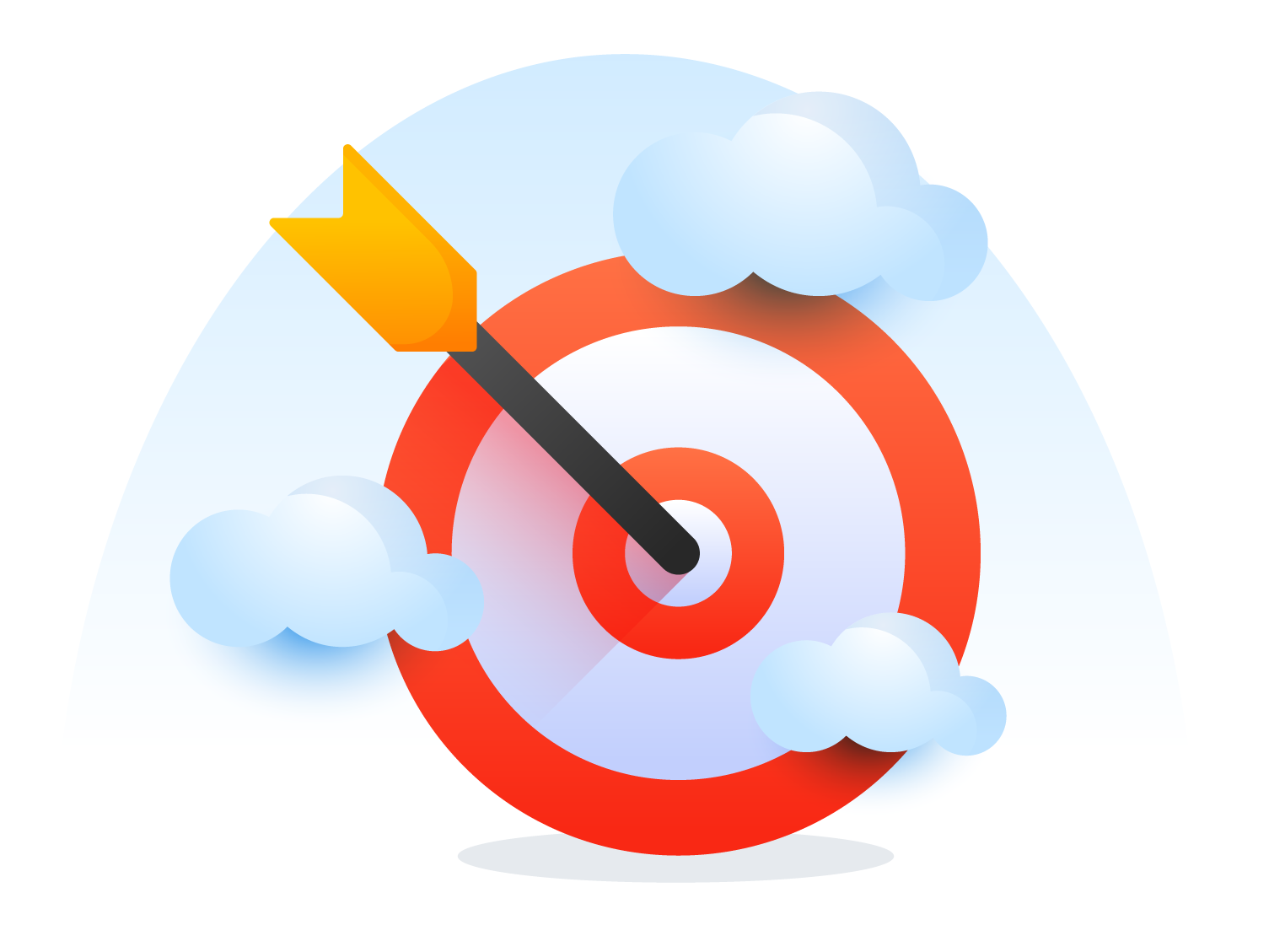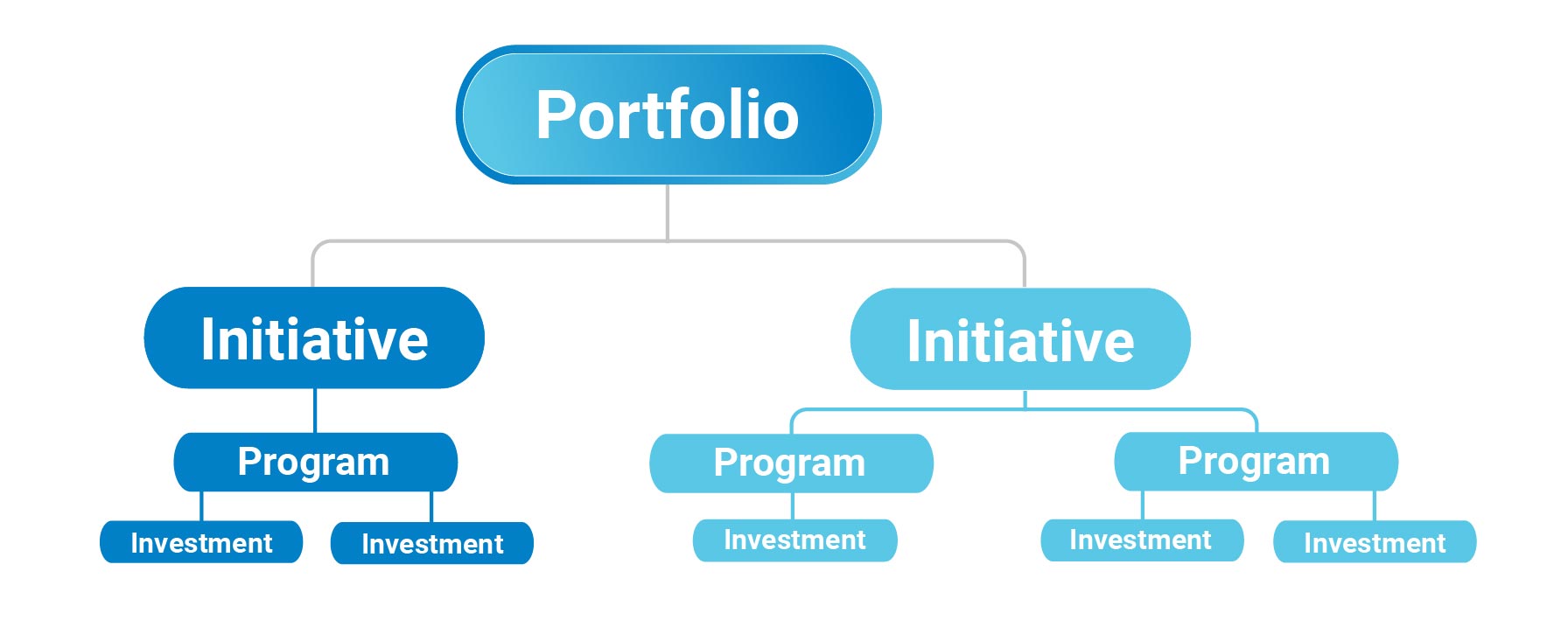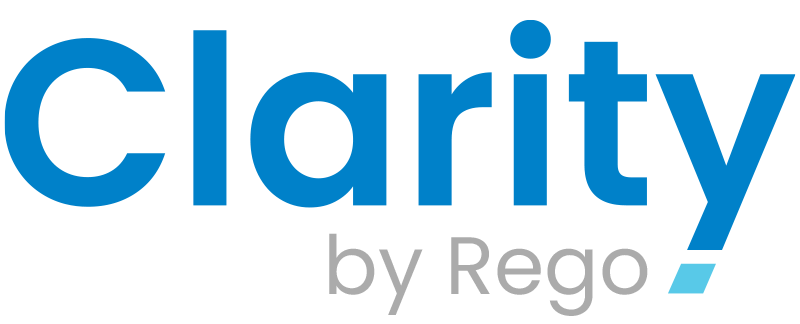by Clarity by Rego
Share

A Plan to Win

“A goal without a plan is just a wish.”
— Antoine de Saint-Exupéry¹
Project Portfolio Management (PPM) is a business framework that supports success! It connects organizational objectives with everyday work – making goals a reality – not just wishful thinking.
Project Portfolio Management Definition
The Project Management Institute (PMI) distills Project Portfolio Management into the following:
“PPM focuses on doing the right projects at the right time by selecting and managing projects as a portfolio of investments.”²
At its core, PPM is an operating model that helps organizations successfully reach their goals. It is a strategic approach to prioritize, manage, and improve the best portfolios of investments,* align all work with business objectives, and maximize resources.
* “Investments” can also be referred to as projects, business as usual (BAU), services, products, competence areas, etc. In this article, we will use the term investment.
PPM Example
Let’s imagine it’s your mission to have a great weekend. You may not realize it, but you use a small scale of Project Portfolio Management to make your goals a reality!
You know you need to accomplish some things:
- Go grocery shopping
- Put snow tires on the vehicle before driving to the mountains
- Pick up your family at the airport, 10:30 AM Sunday
You also want to accomplish some things:
- Go skiing Saturday
- Prepare an amazing Sunday dinner
- Finish the book you’ve been reading
To achieve these goals, you need to proactively define, plan, prioritize, schedule, and monitor your skills (competence), resources (workforce), cash flow, and delivery.
As you cannot fulfill all your goals at the same time, you will define priorities while also considering what resources you have or can obtain, and dependencies (tasks that must happen before others).
For example, examining just one part of your overall “great weekend” goal – prepare an amazing Sunday dinner – you need to know your cooking competence, decide on your menu, go shopping for ingredients, establish the cooking timeline so everything finishes on time, somehow fit in picking up family members at the airport, evaluate if there is someone who can help you, understand the limits of your budget, and balance any delays or unforeseen obstacles. You want the meal to be tasty, nutritious, and satisfying to each person.
PPM Terminology
Now, let’s connect our example with Project Portfolio Management terminology, and see how these terms fit together.
It’s important to understand “portfolio” in the PPM context.
- A portfolio is a collection of work (initiatives, programs, and investments) that are managed and synchronized to achieve strategic goals.
- Remember, terminology can vary between institutions.

| Category |
Definition
|
Key Characteristics | Examples |
|---|---|---|---|
|
Initiative
|
A high–level strategic goal that drives affiliated programs and investments. | Broad scope.
May involve multiple programs or portfolios. Often driven by executive leadership. |
Personal: Enjoy a great weekend, defined as a fun and active weekend.
Business: A company-wide initiative to improve customer experience, leading to programs for digital transformation and AI-driven support |
|
Program
|
A collection of related investments managed and coordinated to achieve broad objectives.
|
Focus is on strategic alignment.
Investments within a program may be interdependent. Managed by a Program Manager. |
Personal: Prepare an amazing Sunday dinner.
Business: A “Digital Transformation Program” that includes investments for a mobile app, website redesign, and cloud migration. |
| Investment | A temporary effort with a defined scope, timeline, and goal. | Has a clear start and end date.
Delivers a specific outcome. Managed by a Project Manager. |
Personal: Go shopping for dinner ingredients.
Business: Developing a mobile app feature for online payments. |
Data Quality
The PPM framework relies on accurate, organization-wide data management. This centralized data provides a transparent picture of all investments and their progress. Informed with a big-picture view, leaders can improve decision-making, streamline efficiency, and achieve strategic goals with confidence.
As you can imagine, a specialized tool can help immensely with the heavy data lifting of PPM.
💡 PRO TIP: Review this helpful resource: Considerations for Purchasing Project Portfolio Management Software
With valid transparent data and the PPM methodology, organizations (and people planning great weekends) can:
Project Management vs Portfolio Management

The key difference between Project Management and Project Portfolio Management is their scope, focus, and purpose. While both disciplines contribute to business success, they operate at different levels within an organization.
| Category |
Project Management (PM)
|
Project Portfolio Management (PPM) |
|---|---|---|
|
Scope 🎯
|
Individual investment, completion of specific deliverables.
|
Multiple portfolios / programs across the organization,
prioritization and alignment with business goals.
|
|
Focus ♟️
|
Complete a single investment,
including planning, scheduling, budgeting, and resource allocation.
|
Strategic decision making,
including prioritizing portfolios / investments, balancing resources, and managing interdependencies.
|
|
Purpose 📋
|
Successfully complete a specific investment on time, within scope, and on budget while handling risks.
|
Maximize business value by ensuring the right portfolios / investments are performed at the right time with acceptable resource allocation.
|
|
Who Oversees Tasks?
|
Project Manager (PM):
responsible for planning, tracking progress, managing risks, and ensuring investment completion.
|
Portfolio Manager or Project Management Office (PMO):
Selects portfolios / investments that are aligned with strategic goals, ensures resources are available, and mitigates risks across portfolios.
|
|
Managing Dependencies
|
Manages task dependencies within an investment: sequencing, resource constraints, and alignment with milestones.
|
Manages cross-investment schedule and business dependencies to avoid bottlenecks and conflicts of shared resources, overlapping timelines, IT integrations, and business related dependencies.
|
|
Risk Management
|
Identifies and addresses investment-specific risks that impact the investment’s timeline, budget, or scope.
|
Evaluate portfolio-wide risks to balance: multiple high-priority initiatives, resource constraints, and potential conflicts between investments.
|
| Decision Making |
Decisions are made at the investment level, focusing on the scope, schedule, and resource availability for that investment.
|
Decisions are made at the organizational level, to ensure all investments align with business objectives.
|
You can learn more about project management here: What is Project Management?
Benefits Of Project Portfolio Management
The PPM framework supports long-term success by helping businesses meet their strategic goals, optimize resources, and make better decisions to increase return on investment (ROI). By using PPM best practices, your organization can move from reactive decision making to proactive strategic planning.
Let’s explore these key benefits and discover how PPM can drive success for your organization and key stakeholders.
1. Align Investments with Business Goals
Project Portfolio Management helps businesses stay focused on what matters most. With visibility across all investments, leaders can easily see which investments are aligned with strategic goals, and adjust work as needed to achieve the best outcomes.
They can also simultaneously track multiple investments and dependencies across departments. This empowers them to ensure the right initiatives move forward at the right time. Prioritizing the highest-value work helps businesses pivot and can increase ROI.
Stakeholder Benefits
The following stakeholders might express the impact of PPM’s ability to align investments with business goals in the following ways:
 Executive Leadership / CFOs: ‘Now that we have PPM, I know exactly which investments are the most profitable. I have a clear view of my cash flow and data-driven insights that show where our money is making the biggest impact. We can forecast future trends and fund the correct initiatives with confidence!’
Executive Leadership / CFOs: ‘Now that we have PPM, I know exactly which investments are the most profitable. I have a clear view of my cash flow and data-driven insights that show where our money is making the biggest impact. We can forecast future trends and fund the correct initiatives with confidence!’
 Portfolio Managers and Strategy Teams: ‘PPM gives us a precise, strategic view of all our investments, so we can prioritize the investments that will bring measurable progress. No more gut-feeling decisions, just smart and strategy-aligned choices backed by data.’
Portfolio Managers and Strategy Teams: ‘PPM gives us a precise, strategic view of all our investments, so we can prioritize the investments that will bring measurable progress. No more gut-feeling decisions, just smart and strategy-aligned choices backed by data.’
 Business Unit Leaders and Department Heads: ‘Instead of fighting for resources or struggling to justify priorities, PPM helps me keep my team focused on the highest-impact initiatives. I’m also able proactively manage potential resource bottlenecks and business dependencies. What a relief! Now, I can methodically advocate for the right investments at the right time.’
Business Unit Leaders and Department Heads: ‘Instead of fighting for resources or struggling to justify priorities, PPM helps me keep my team focused on the highest-impact initiatives. I’m also able proactively manage potential resource bottlenecks and business dependencies. What a relief! Now, I can methodically advocate for the right investments at the right time.’
 Finance Teams / Controlling: ‘Budgeting used to feel like a high-stakes guessing game, but PPM has made it easy to determine which investments are financially viable and strategically sound. We see plans, forecasts, and actuals in one place, and can prove that every dollar we allocate supports our company’s financial goals.’
Finance Teams / Controlling: ‘Budgeting used to feel like a high-stakes guessing game, but PPM has made it easy to determine which investments are financially viable and strategically sound. We see plans, forecasts, and actuals in one place, and can prove that every dollar we allocate supports our company’s financial goals.’
 Customer Experience and Product Teams: ‘PPM saves so much time and effort! Now we have confirmation that the products that we are developing are the correct products. By aligning investments with customer needs and strategic roadmaps, we can efficiently create valuable deliverables.’
Customer Experience and Product Teams: ‘PPM saves so much time and effort! Now we have confirmation that the products that we are developing are the correct products. By aligning investments with customer needs and strategic roadmaps, we can efficiently create valuable deliverables.’
2. Optimize Resource Allocation
PPM helps businesses ensure they are assigning the right people to the right investments at the right time. Resources are allocated effectively by utilizing visibility into capacity, availability, and skill sets. Over-allocated and under-allocated resources are clearly identified and can be adjusted to prevent delays and burnout.
PPM can accelerate delivery timelines, as investments are not hindered by limited resources. It also provides a comparison of estimates and actual work, to improve future outcomes.
Stakeholder Benefits
The following stakeholders might express the impact of PPM’s ability to optimize resource allocation in the following ways:
 Resource Managers: ‘PPM is a game changer! I can finally see the full picture of who is available, who is overbooked, and where skill gaps exist. I don’t have to scramble to staff last-minute investments. Instead, I can proactively plan and make sure that teams are balanced and workloads are manageable.’
Resource Managers: ‘PPM is a game changer! I can finally see the full picture of who is available, who is overbooked, and where skill gaps exist. I don’t have to scramble to staff last-minute investments. Instead, I can proactively plan and make sure that teams are balanced and workloads are manageable.’
 Project Managers: ‘Before we had PPM, I felt like I was flying blind – constantly crossing my fingers that my team had the capacity to deliver on time. With PPM, I can see resource availability and potential bottlenecks before they become a problem. PPM makes it easy to reach the resource managers to adjust resource allocation.’
Project Managers: ‘Before we had PPM, I felt like I was flying blind – constantly crossing my fingers that my team had the capacity to deliver on time. With PPM, I can see resource availability and potential bottlenecks before they become a problem. PPM makes it easy to reach the resource managers to adjust resource allocation.’
 Business Unit Leaders and Department Heads: ‘Juggling resources across multiple investments used to be so chaotic. But PPM helps us allocate resources strategically and make sure our teams are working on the most critical investments without burning out.’
Business Unit Leaders and Department Heads: ‘Juggling resources across multiple investments used to be so chaotic. But PPM helps us allocate resources strategically and make sure our teams are working on the most critical investments without burning out.’
 Finance Teams / Controlling: ‘PPM gives me a clear breakdown of our total resource CapEx and OpEx costs, including labor, contractors, software, travel, training, and more. Knowing these numbers, we don’t get hit with budget surprises. We can maximize spending with smarter financial planning.’
Finance Teams / Controlling: ‘PPM gives me a clear breakdown of our total resource CapEx and OpEx costs, including labor, contractors, software, travel, training, and more. Knowing these numbers, we don’t get hit with budget surprises. We can maximize spending with smarter financial planning.’
 Change Management and Adoption Teams: ‘Shifting resources for new investments or restructuring efforts used to be so painful – with confusion, delays, and resistance at every turn. Now, PPM helps us manage transitions smoothly and strategically, so that teams have the resources they need when priorities inevitably shift.’
Change Management and Adoption Teams: ‘Shifting resources for new investments or restructuring efforts used to be so painful – with confusion, delays, and resistance at every turn. Now, PPM helps us manage transitions smoothly and strategically, so that teams have the resources they need when priorities inevitably shift.’
3. Informed Decision Making
PPM supports smarter, faster, data-based decision making based on wholistic insights. With increased visibility into investment performance, risks, and outcomes, leaders gain actionable insights.
These insights equip leaders to take calculated risks and anticipate future challenges. Businesses can pivot and stay ahead of change, instead of reacting to crises with proactive risk management at the portfolio level. Leaders can utilize scenario planning for accurate forecasting, and develop a clear roadmap for the future to ensure long-term success.
Stakeholder Benefits
The following stakeholders might express the impact of PPM’s ability to support informed decision making in the following ways:
 Executive Leadership: ‘With PPM, I no longer rely on scattered bits of information or gut instincts – I have consolidated data that is easy to visualize and analyze. I can confidently make strategic decisions that drive measurable, meaningful outcomes.’
Executive Leadership: ‘With PPM, I no longer rely on scattered bits of information or gut instincts – I have consolidated data that is easy to visualize and analyze. I can confidently make strategic decisions that drive measurable, meaningful outcomes.’
 Portfolio and IT Leaders: ‘PPM makes investment planning fun! Before making a major decision, I can reduce risk by modeling different scenarios and comparing trade-offs. Supported by strong data, we can confidently commit to the best investments.’
Portfolio and IT Leaders: ‘PPM makes investment planning fun! Before making a major decision, I can reduce risk by modeling different scenarios and comparing trade-offs. Supported by strong data, we can confidently commit to the best investments.’
 Finance and Risk Management Teams: ‘Finally, we have a clear view of costs, forecasted costs, and risks across all our investments! PPM surfaces data that helps us see potential financial impacts down the road, so we can proactively adjust our budgets instead of spending the time and effort to fix overspending later.’
Finance and Risk Management Teams: ‘Finally, we have a clear view of costs, forecasted costs, and risks across all our investments! PPM surfaces data that helps us see potential financial impacts down the road, so we can proactively adjust our budgets instead of spending the time and effort to fix overspending later.’
 Compliance and Risk Teams: ‘Adhering to regulatory requirements is so much simpler with PPM. It provides information that helps us identify risks early, enforce compliance, and keep investments aligned with industry standards.’
Compliance and Risk Teams: ‘Adhering to regulatory requirements is so much simpler with PPM. It provides information that helps us identify risks early, enforce compliance, and keep investments aligned with industry standards.’
 Business Unit Leaders and Department Heads: ‘PPM is our fast-pass to avoid nasty surprises. The data-backed insights help us forecast resource needs, prevent bottlenecks, and plan smarter, so we can keep our teams focused on delivering results.’
Business Unit Leaders and Department Heads: ‘PPM is our fast-pass to avoid nasty surprises. The data-backed insights help us forecast resource needs, prevent bottlenecks, and plan smarter, so we can keep our teams focused on delivering results.’
Does Your Organization Need PPM?
Take a moment to assess your organization, from wishful thinking to reality:
Does it seem impossible to make all of these outcomes a reality?
The good news is that you’ve taken the first step to resolving these challenges! Understanding Project Portfolio Management is the foundation to increase success across your organization.

Conclusion
Project Portfolio Management (PPM) is the key to ongoing organizational success.
PPM is an operating model that helps organizations consolidate big picture data. This helps businesses successfully reach their goals by:
- Prioritizing, managing, and improving the best portfolios of investments (“Investments” can also be called: projects, BAU, services, products, competence areas, etc.)
- Aligning all work with business objectives
- Optimizing resources
PPM relies on high quality data, which supports leaders with accurate insights, empowering them to make informed decisions faster. Specialized PPM tools are designed to help with every aspect of PPM to maximize efficiency and support better business outcomes.
Additional Resources
¹ https://operational-excellence-hub.com/15-project-management-quotes/
² Oltmann, J. (2008). Project portfolio management: how to do the right projects at the right time. Paper presented at PMI® Global Congress 2008—North America, Denver, CO. Newtown Square, PA: Project Management Institute.
STAY IN THE LOOP
Get Notified of Updates.
Stay ahead of the curve by subscribing to our newsletter. Get the latest insights, strategies, and tools delivered straight to your inbox, and empower your business to achieve more.

